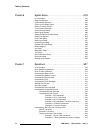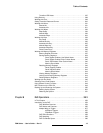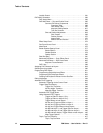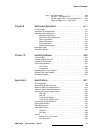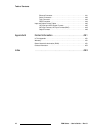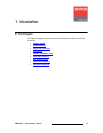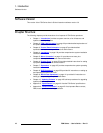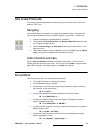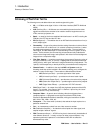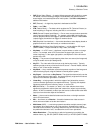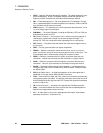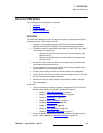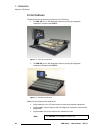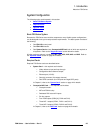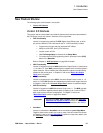
20 FSN Series • User’s Guide • Rev 01
NK==fåíêçÇìÅíáçå
Glossary of Switcher Terms
däçëë~êó=çÑ=pïáíÅÜÉê=qÉêãë=
The following terms and abbreviations are used throughout this guide:
• 3G — A 3 Gbit/s serial digital 10-bit or 12-bit video interface (SMPTE 424M and
425M).
• AUX (Auxiliary) Bus — AUX buses are extra switching buses that allow video
signals connected to the switcher to be routed to external equipment such as
VTRs, monitors, projectors, etc.
• Bank — a name for the three combined individual buses in an M/E, including the
PGM bus, the PST bus and the KEY bus.
• BG (Background) — The switcher bus on an M/E bank that selects the on-line (or
on-air) output signal.
• Chroma Key — A type of key where the hole-cutting information is derived from a
color rather than from a video level. An common example on television, is when
the weatherman appears to be standing in front of a map. The map itself is a
video signal, and the weatherman is in fact standing in front of a green (or blue)
screen. On the switcher, the Chroma Key process electronically subtracts the
color from the foreground image, and replaces it with video from the background
image to form a composite image.
• Clip, Gain, Opacity — In switcher terminology, the process of fine-tuning a key of
any type (luminance, linear, or chroma). Clipping sets the threshold for the hole-
cutting circuitry, while "gain" defines the range and sensitivity of adjustment. The
"opacity" is the transparency or density of the key, as revealed over a background.
• Chassis Cards — In addition to the required M/E and System cards, the
following cards that can be installed in the chassis, enabling you to configure the
switcher in many flexible ways. These cards are abbreviated as follows:
~ NIC (Native Input Card) — provides eight native video inputs.
~ UIC (Universal Input Card) — provides two universal scaler inputs.
~ UOC (Universal Output Card) — provides two universal auxiliary outputs.
~ NAC (Native Aux Output Card) — provides eight native auxiliary outputs.
~ DVE (Digital Video Effects) — provides two “2D” DVE channels.
• CLN (Clean Feed) — An output of an M/E that originates upstream of the M/E’s
keyers. For example, if the output of M/E 1 is Camera 1 plus a key, the “clean”
output is Camera 1 only, minus the key.
• Computer Video — A generic term indicating video that originates from a
computer platform. A progressive scan signal that follows VESA (Video
Electronics Standards Association) standards, with typical resolutions of 800 x
600, 1024 x 768, 1280 x 1024, etc.
• Crosspoint — The video switch (or button) that selects the input required on a
particular switcher bus.
• Cut — an instantaneous switch from one video source to another.
• DA (Distribution Amplifier) — A video device that inputs one video signal, and
outputs multiple “identical” signals.
• DSK (Downstream Keyer) — A DSK is a key that is electronically located after all
other switcher functions — visually on top of all other layers and buses. Any
operations performed “upstream” on the switcher M/Es will not affect the
downstream key video.



